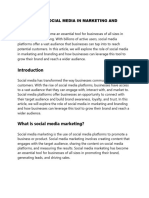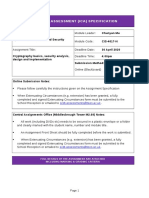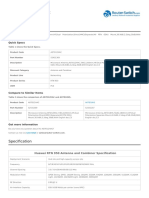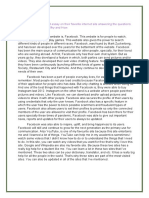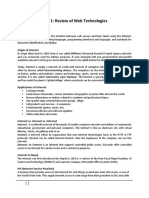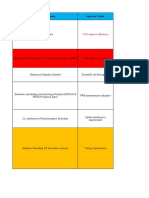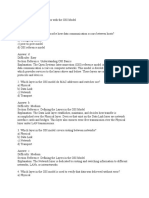Unit-3
Social Media Marketing
Introduction
Social media marketing (SMM) is the use of social media platforms to connect with an audience
to build a brand, increase sales, and drive website traffic. It involves publishing content on social
media profiles, engaging with followers, running advertisements, and analyzing performance
data. Given the growing digital landscape, social media marketing has become a crucial
component of any successful marketing strategy.
With billions of users worldwide, social media has transformed how businesses interact with
customers, making it an essential tool for modern marketing. Businesses can leverage platforms
like Facebook, Instagram, Twitter, LinkedIn, YouTube, and TikTok to create targeted marketing
campaigns, promote their products, and foster community engagement.
Major Social Media Platforms for Marketing
Different social media platforms cater to different demographics and serve various marketing
purposes. The most popular platforms for marketing include:
Facebook – With over 2.9 billion monthly active users, Facebook is one of the largest social
media platforms. It offers robust advertising tools, community-building features, and
detailed audience insights, making it ideal for businesses looking to engage with customers
through posts, videos, and paid ads.
Instagram – Focused on visual storytelling, Instagram is perfect for brands that rely on
strong visuals, such as fashion, travel, and food industries. Instagram Stories, Reels, IGTV,
and shoppable posts help businesses drive engagement and sales.
Twitter – A microblogging platform known for real-time updates, brand interactions, and
customer service. Twitter is effective for trending topics, news dissemination, and engaging
in direct conversations with customers.
LinkedIn – A professional networking platform best suited for B2B marketing, recruiting,
and sharing industry-related content. Businesses use LinkedIn to establish thought
leadership, generate leads, and network with professionals.
YouTube – As the second-largest search engine after Google, YouTube is a powerful video
marketing platform. Businesses can create tutorials, product reviews, and behind-the-scenes
content to engage audiences and improve SEO rankings.
TikTok – Known for its short-form video content, TikTok is gaining popularity for viral
challenges, influencer collaborations, and brand promotions, especially among younger
audiences.
Pinterest – A highly visual platform where users discover and save ideas for various
interests, including fashion, home decor, DIY projects, and recipes. Businesses can use
Pinterest to drive traffic to their websites through pinned content.
�Developing Data-Driven Audience & Campaign Insights
Successful social media marketing is driven by data analysis and audience insights. Key steps
include:
Identifying the Target Audience – Businesses must understand their audience
demographics, interests, behaviors, and preferences to craft personalized marketing
strategies.
Analyzing Engagement Metrics – Tracking engagement metrics such as likes, shares,
comments, and click-through rates helps optimize content for better reach and interaction.
A/B Testing – Running different versions of ads or posts allows marketers to test what type
of content performs best and refine their strategy accordingly.
Utilizing Social Media Analytics Tools – Platforms like Google Analytics, Facebook
Insights, Instagram Insights, and third-party tools like Hootsuite and Sprout Social provide
valuable data for campaign performance measurement.
Social Listening – Monitoring conversations and brand mentions across social media helps
businesses understand customer sentiment and identify trends that can influence marketing
strategies.
Social Media for Business
Businesses leverage social media for various objectives, including:
Brand Awareness – Posting regular content and engaging with users to increase visibility
and reach.
Lead Generation – Running targeted ads and promotions to capture potential customers and
grow email lists.
Customer Support – Using platforms like Twitter and Facebook Messenger to respond to
customer inquiries and provide support.
Community Building – Encouraging discussions, loyalty programs, and brand communities
to strengthen customer relationships.
Reputation Management – Handling customer feedback, addressing complaints, and
maintaining a positive brand image online.
Influencer Collaborations – Partnering with social media influencers to promote products
and reach a wider audience.
Creation & Optimization of Social Media Campaigns
A well-structured social media campaign involves:
1. Goal Setting – Defining clear marketing objectives, such as increasing brand awareness,
generating leads, or driving sales.
2. Content Strategy – Developing a content calendar with engaging and diverse content types
such as images, videos, blogs, live streams, and interactive posts.
3. Platform Selection – Choosing the right social media channels based on target audience
demographics and campaign goals.
4. Ad Campaigns – Running paid advertisements using platform-specific targeting options,
such as Facebook Ads Manager and Google Ads.
�5. Influencer Partnerships – Collaborating with influencers and content creators to enhance
credibility and expand reach.
6. Performance Monitoring – Regularly tracking key performance indicators (KPIs) like
reach, impressions, engagement rate, and conversion rate to measure success.
7. Continuous Optimization – Analyzing campaign results and making data-driven
adjustments to improve performance.
Best Practices for Social Media Marketing
To maximize the effectiveness of social media marketing, businesses should follow these best
practices:
Consistent Branding – Maintain a cohesive brand voice, visuals, and messaging across all
social platforms.
Engagement & Interaction – Respond to comments, messages, and mentions to foster
relationships with followers.
Use Hashtags Strategically – Hashtags improve discoverability and expand content reach
on platforms like Instagram and Twitter.
Post at Optimal Times – Analyze audience behavior and post during peak engagement
hours.
Leverage User-Generated Content – Encourage customers to share their experiences with
your brand and feature their content.
Stay Updated with Trends – Monitor industry trends and adapt strategies accordingly.




























